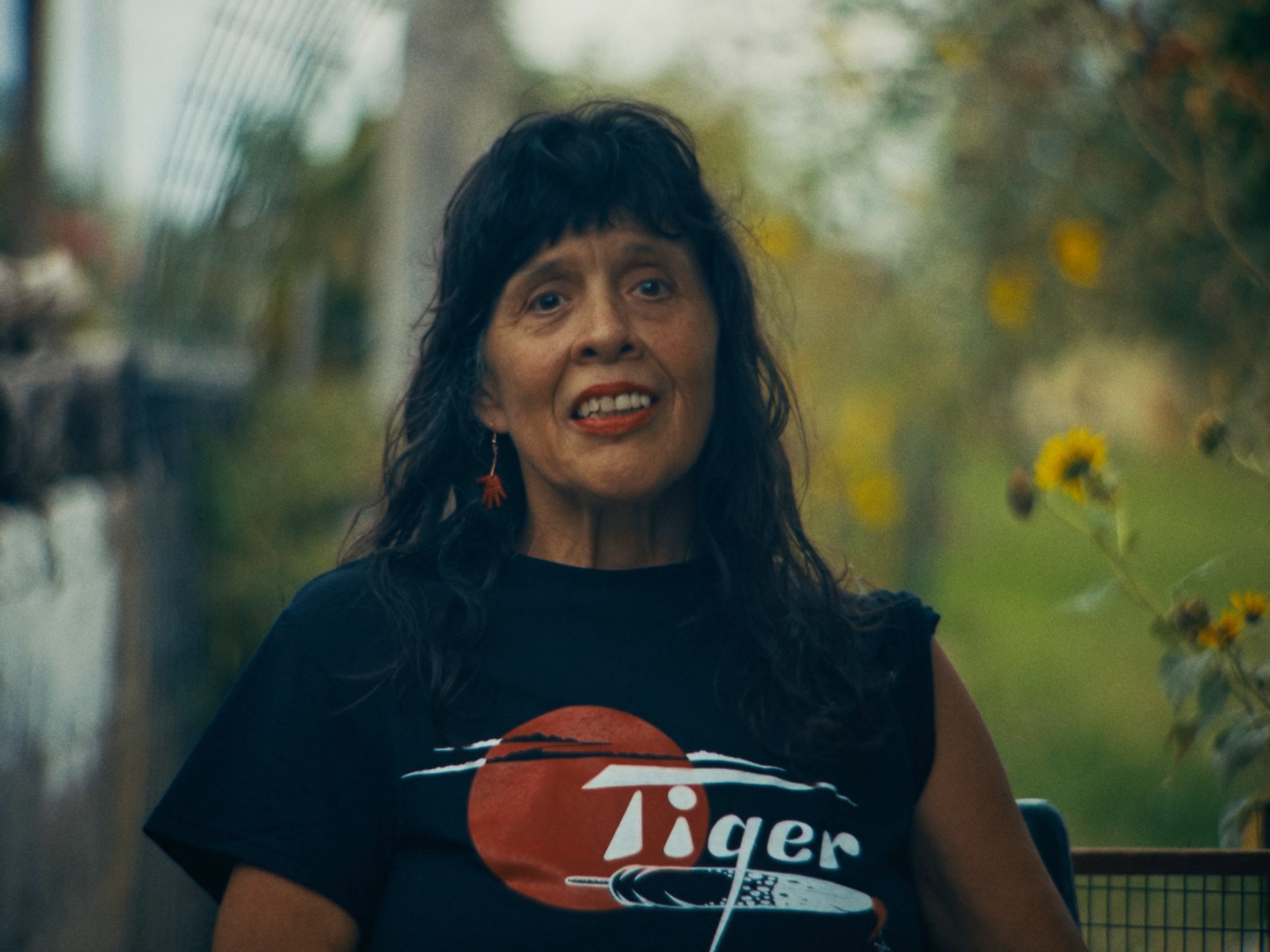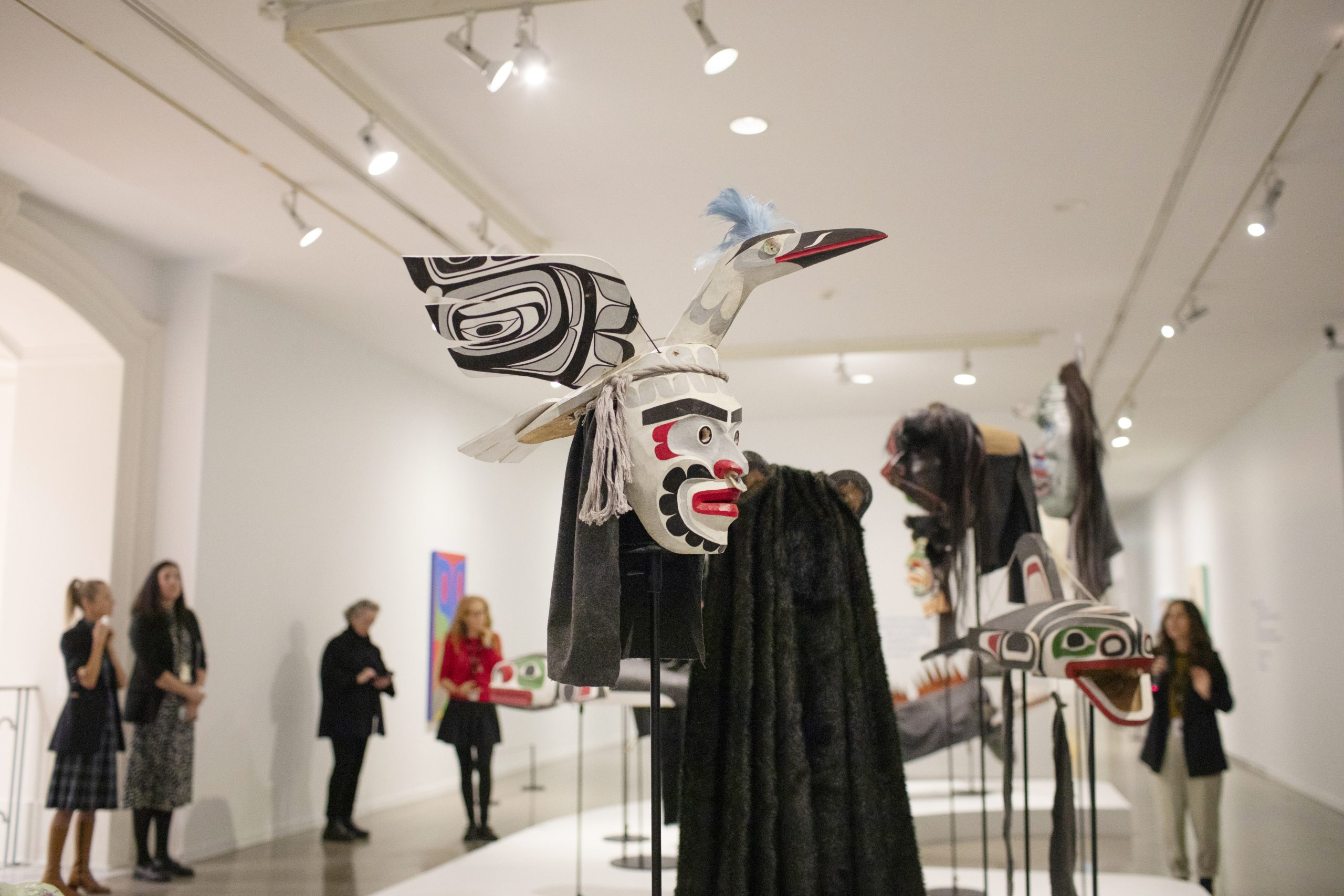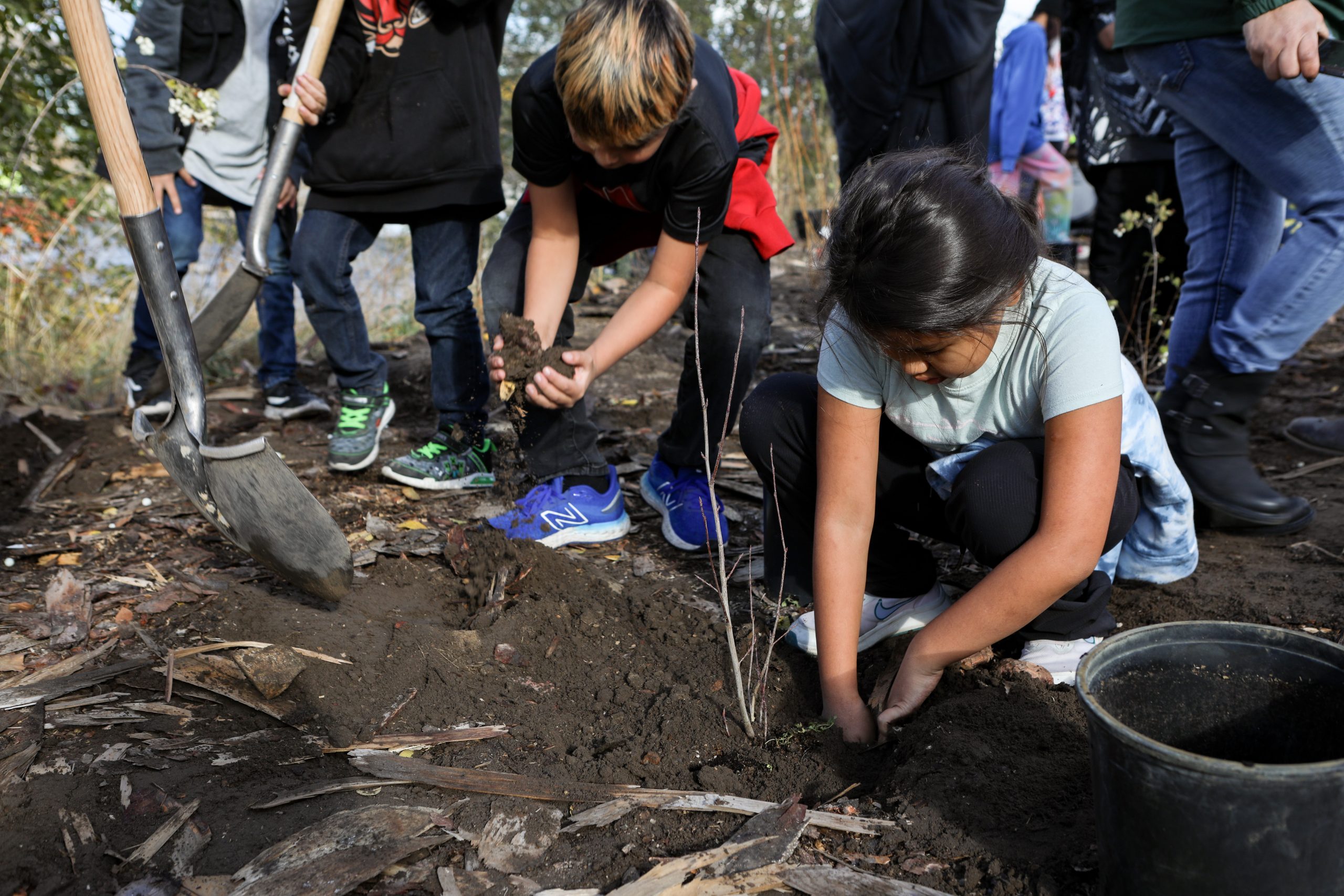‘Trust the process’: Syilx author shares her journey of healing in new book
Calling My Spirit Back is based on Elaine Alec’s past and present, and provides traditional tools for wellness.

I met Elaine Alec, a Syilx and Secwepemc author, mother and business owner, at the Coast Hotel in Kamloops, B.C.
The hotel room where we met quickly filled with our laughter as we spoke about our common ties to our Syilx and Secwepemc nations, we both became animated as Syilx People do when they share stories with one another as a way to build kinship.
The laughter continued over the course of our conversation about what it was like to write her first book.
Set to release on July 24, Calling My Spirit Back required Alec to be vulnerable and honest about her past.
“So, my book starts off as my lived experience. It talks about my childhood and being raised by Tuma, who was a language speaker,” she says. “I grew up with her and it talks about the trauma in my life, because my mom was a practicing alcoholic for the first 10 years of my life.”
“But it leads into how I was striving for sobriety, how I was striving for a better life, how I fought through a lot of things that were holding me back.”
This book is not your typical tell-all. It took Alec 10 years to be able to write it and she says this is in large part due to her lack of tools to care for herself while sharing such personal stories.
“I didn’t have enough tools myself to get through. So there was no way that I could help anybody else understand it, or provide advice or anything, on how to move through that, so I had to do that work,” says Alec.
It was her work facilitating the Path Forward initiative for the Missing and Murdered Indigenous Women’s Inquiry that gave her the inspiration she needed to write this book. When she sat down to write, she finished in 29 days.
IndigiNews met with Alec to talk about this experience. I’ve edited our conversation for length and clarity.
Kelsie: What is your book about?
Elaine: It talks about my childhood and being raised by Tuma, who was a language speaker. She spoke fluent Nsyilxcen and she didn’t speak English at all. So I grew up with her, and it talks about the trauma in my life, because my mom was a practicing alcoholic for the first 10 years of my life. So it talks a lot about that but it leads into how I was striving for sobriety, how I was striving for a better life, how I fought through a lot of things that were holding me back. And it ends with providing tangible steps and tools for people to cultivate safe space in their own healing and for others.
I wanted to write it for 10 years. I couldn’t do it, I tried so many times, I would get inspired, then I would sit down and it never happened.
But last summer, I did a tour of British Columbia and went to 12 areas of the province to host conversations around missing and murdered Indigenous girls and women and girls’ safety. And we had some really tough conversations. We went beyond the ‘How can we do better?’ and we actually started talking about how we know that there’s perpetrators living in our communities right now and nothing is being done, why not? How can we address that? Because there are things we whisper about in our communities but we never want to talk about.
People were really worried about the depth of the questions we were asking, but we utilized Enowkin’wx, and we utilized ceremony to create that space for people to share. By the end of it, people felt so empowered, they felt that there was a path forward, and that they could actually take some steps to move from where they were at to some place better.
K: So for those who don’t know, what is Enowkinwix?
E: So, Enowkinwix is a traditional planning tool, governance tool, or decision-making tool, where we utilize our creation story, of how food was given, or the Four Food Chiefs Story, and we set protocols in place on how we are going to gather and how we are going to be together.
We also acknowledge that we have different perspectives, we might not have the same ideas or the same answers, we might not do things in the same way, we might not even like each other, but we set protocols in place that acknowledges each one of us are still important and that we are going to put our judgments aside as best as we can and focus on everything that is being said as information.
So it’s really setting protocols in place to meditate yourself to be present for the people in the room, and do that witnessing of their story and where they’re coming from.
K: What was it like for you to write the book? What was your process?
E: I sat down on Dec. 1 and I told my husband I need to write this book by Jan. 1 2020, and I’m not coming out of this room, I’m not cleaning, I’m not cooking, I’m done! I’m hiding in this room until this book is done. Because I just knew I had to do it, and so he’s totally supported me in that.
It was hard. I took our guest room and turned it into my writing space. I put big flip charts on all the walls to keep me on track. So, I had messages like, ‘You’re going to go through the marathon the middle.’ Which is you’re going to get to the middle and you’re going to start questioning yourself and you’re going to think is this good enough?
And you’re going to want to quit because it’s going to get to that point where it just feels like it’s never going to end, and I was going to have to be mentally prepared to push through that. And so I had that, and then I had an outline and I figured out what I wanted to talk about so I named my chapters, and they’re not named in my book, but I had chapters like, ‘All about my life,’ or, ‘All about my childhood,’ ‘All about love,’ ‘All about men,’ ‘All about healing,’ ‘All about sobriety,’ and I wrote under those topics and then I kind of pulled them together.
I went to a retreat a number of years ago and the woman who hosted it, she was writing her book too, she worked with a lot of authors, and she said to me, ‘Creativity lives on the lips of vulnerability.’ And I realized that was it, my best writing came when I was being vulnerable and open.
I could only write what I was willing to be open and vulnerable about in that moment and so same thing. I would wake up at 5:30 a.m. and write for an hour and a half before my son got up. Then I would play with him, then I would do my work for my company, and then I would go back into the room for another two hours so I wrote a minimum of three hours a day, to a maximum of six hours, I think.
K: How did you choose what to put in the book?
E: I really wrote from what I pulled from my life. I didn’t realize that, you know, my mom decided to strive from sobriety when I was 10. She started connecting with all of these really powerful medicine people and helpers, they didn’t call themselves medicine men or women, but they were. So she would introduce us to them and they would share stories with us.
They were and they shared prophecies and those things stuck with me and I guess I’ve been a storyteller for my entire life because growing up with my Tuma, growing up with my Elders, I was not allowed to talk, I was only supposed to listen. I was not allowed to write things down, and so I had to learn to listen really hard, and I was able to repeat things that I heard. So I have this really uncanny memory when it comes to stories and details.
K: Did you have writer’s block at any point?
E: Not this time, but I did for 10 years.
K: Who are the authors you look up to?
E: Dr. Jeanneatte Armstrong, I fangirled over her, she’s amazing and so humble. And she really just does not like when you fangirl over her. She shared so much with me.
Dr. Lee Maracle is the second writer who really influenced me the most. And Monique Gray Smith, and Helen Knott.
Helen really inspired me, I saw what she did and said, “Wow, she did it.” Her writing is poetic, it’s beautiful, and she’s a literary genius. As she continues to write and share, she is going to be remembered for a very long time as one of the best authors we have ever had.
K: What was your self-care or ceremonial process while writing?
E: I talked a lot to my husband, who is a huge support for me. I talked to my uncles, I talked to my sponsors. I went to the water a lot, every second week I would go back to Penticton, and go visit Coyote Rock and go to Antlers Beach. Those were my two favourite places to regenerate. But visiting Syilx territory, the moment I go, I’m yes.
K: What part of this book was most difficult for you to write or to put into words?
E: It was the first hundred pages. Probably from the moment my mom had her stroke, when I was 19. That was what changed my life because I started drinking again, and I had been sober for maybe a year and a half until she had her stroke, and then I lost it.
That’s where I became suicidal and I attempted suicide. I went through my husband leaving me for another woman after we had gotten sober and started working towards a better relationship, so that devastated me. There was a whole bunch of stuff that happened between 19 and 29. And a lot of it, I talked about it, I held circles about it, people know about it, I’m really open about my life, but it was different writing it.
Knowing it was going to be published, and out there forever, without me being able to set space for myself to be safe, and so that was really tough. I actually triggered myself during that process, and I started getting short-tempered, all my self-defeating behaviours came up.
Then I realized, I’m triggered right now, I need to take care of myself and go to a counselling session, go to an AA meeting, so I started going to AA meetings during that part of my book. Then, I remember, when I got to page a hundred on my document, and I got through that piece, it was like, I just opened up. Because I was done and I was able to say, “Okay, this is the healing part. This is the part I’m living in now, and I’m excited to share this with people.” And it was the last half of my book that just came. I didn’t think I was going to make my Jan. 1 [deadline] because of the way the first half of the book went. Then I was so surprised, and I was telling my husband, “I’m going to be done this book sooner than I thought! I think I’m going to be done next week!”
But that was the medicine piece. But I know now why, before, I couldn’t go past 75 pages. I just couldn’t do it because I didn’t have the tools to take care of myself. I realize that I didn’t know how to work through post-traumatic stress, because I didn’t know what it meant back then. So because I’ve gone through it and I named it, I figured out how to tell myself this is happening right now, but I’m going to work through it and there is going to be a light at the end of the tunnel. And I’m going to be stronger. I just have to trust the process.
So that’s what I did with this book. I just have to trust the process of it, and that it’s going to help somebody, it’s going to be a tool for somebody to see that there’s hope.
K: What is the greatest teaching you’ve taken from the book and writing it?
E: There are so many more beautiful people out there than I thought. I was so jaded against Canada. I was so jaded against the people and the racism and the ignorance. That was all I saw. And I was so scared to reach outside of my comfort zone to share the book, because that’s all I saw was the racism, was the discrimination, was the violence. So my experience has been the exact opposite. The people who are stepping up, who are white settlers, who are from other countries, people of colour from other countries, who are stepping up to say, “We support you, we want to help amplify your voice, we want to do better, we want to learn, we want to be safe for people.”
That first week in the book community, the writer community, was such an awakening for me, to see that there’s way more beautiful people in Canada than I thought.
Elaine Alec’s book Calling My Spirit Back is being released on July 24. You can find it here.
Author
Latest Stories
-
‘Bring her home’: How Buffalo Woman was identified as Ashlee Shingoose
The Anishininew mother as been missing since 2022 — now, her family is one step closer to bringing her home as the Province of Manitoba vows to search for her
-
Short film showcases the inspiring story of Dana Tiger — and a family design legacy
Muscogee artist’s life, work, and fashion business are the subject of Loren Waters’ Sundance-acclaimed documentary ‘Tiger’












